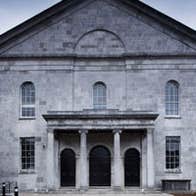In Northern Europe during the fifteenth century, we encounter the meeting point of the radically real with the vibrantly visionary. We explore the photo-realism of Jan Van Eyck, whose Ghent Altarpiece still mystifies viewers through its rendition of real textures and profusion of lifelike characters, as well as the frightening hellscapes of Hieronymus Bosch, whose nightmarish hybrid demons recall Salvador Dalí at his most surreal.
We also see how the rise of printmaking was a force for the development of new imagery and ideas, Albrecht Dürer harnessing the technology in the service of humanistic self-expression, while the early expressions of Protestant reform embraced the medium as a means to spread urgent messages.

